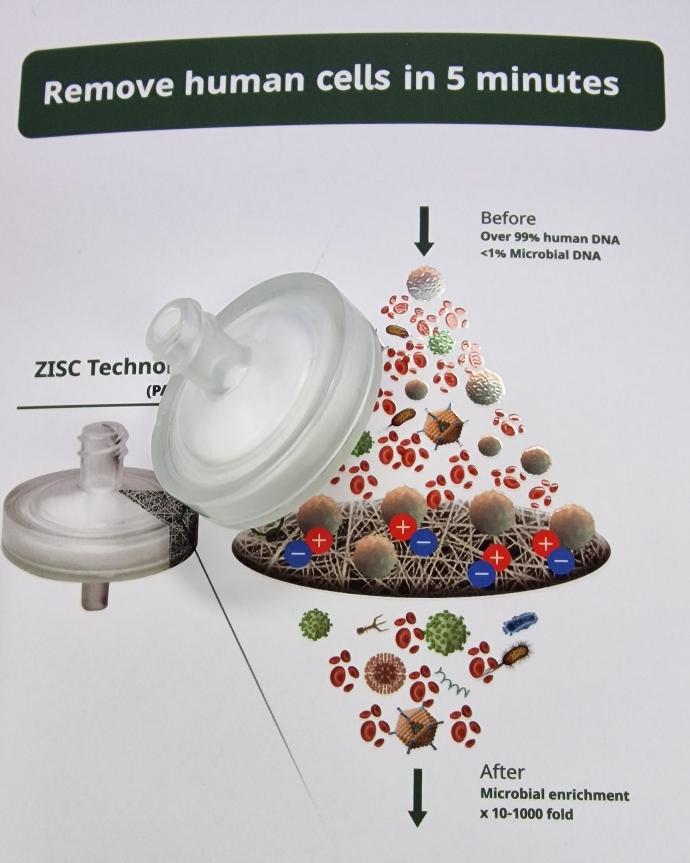How to use fractionation syringe filter?
Ready-to-use Syringe-driven Filter for wide use in Microbiology Applications
With microbrane filters ,
depletion of white blood cells WITHIN 5 MINUTES !
Use : Whole blood , plasma and other body fluids (serum , swabs and washed )
Type : Syringe Fractionship filter
Sterility : Sterile
Shelf life : 25°C , 1 year
Packaging : 24 per box
Pore size : 15-20 µm / 25 mm
Volume range : 10 mL
Common purposes for using fractionation syringe filters :
Particle removal: Fractionation syringe filters are used to remove particulate matter, such as debris, sediment, or contaminants, from liquid samples. This helps to ensure the purity and clarity of the filtrate, making it suitable for further analysis or downstream applications.
Sample purification: Fractionation syringe filters can be used to separate and purify specific fractions or components of a sample. By selecting a filter with an appropriate pore size, molecules or particles of a certain size can be retained or allowed to pass through, enabling the isolation of specific compounds or fractions.
Sample concentration: Fractionation syringe filters with a specific molecular weight cut-off (MWCO) can be used to concentrate samples by retaining molecules above a certain size while allowing smaller molecules and solvent to pass through. This concentration step can be useful in preparing samples for further analysis or reducing sample volumes.
Sterilization: Fractionation syringe filters are commonly used for sterilizing or filtering liquids to remove microorganisms and ensure aseptic conditions. This is important in microbiology, cell culture, and other applications where a sterile environment is crucial.
HPLC/GC sample preparation: Fractionation syringe filters are often used in sample preparation for high-performance liquid chromatography (HPLC) or gas chromatography (GC). They remove particulates or contaminants that can interfere with the analysis or damage the chromatography columns, resulting in better separation and more accurate results.
A step-by-step guide to use a fractionation syringe filter :
1. Select the appropriate syringe filter: Fractionation syringe filters come in different pore sizes and materials, so choose one that suits your specific application and requirements.
2. Prepare the syringe: Ensure that your syringe is clean and sterile. If it's a new syringe, remove the packaging and attach the filter to the syringe by twisting it onto the luer-lock connector at the tip.
3. Prepare the sample: If necessary, prepare your sample solution by filtering it through a larger-pore filter or by centrifuging it to remove large particles or debris.
4. Load the sample: Draw the liquid sample into the syringe by pulling back the plunger gently. Make sure not to exceed the maximum recommended volume indicated on the syringe filter.
5. Attach the outlet: Once the sample is loaded, remove any air bubbles by gently tapping the syringe and then attach the appropriate collection container or vessel to the luer outlet at the opposite end of the syringe filter.
6. Filter the sample: Slowly and steadily push the plunger down to force the liquid sample through the filter membrane. Apply a consistent pressure to ensure the sample passes through the filter efficiently.
7. Collect the filtrate: As the sample passes through the filter, the desired fraction or purified liquid will collect in the container attached to the outlet. Ensure that the container is properly labeled for identification.
8. Dispose of the filter: After filtration, carefully detach the syringe filter from the syringe. Dispose of the used filter properly according to your laboratory's waste management guidelines.
9. Clean or replace the syringe: If the syringe is reusable, clean it thoroughly following standard laboratory procedures. If it is a disposable syringe, dispose of it properly.
